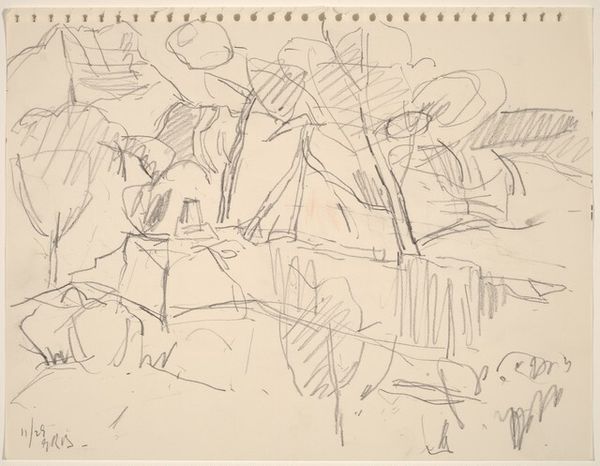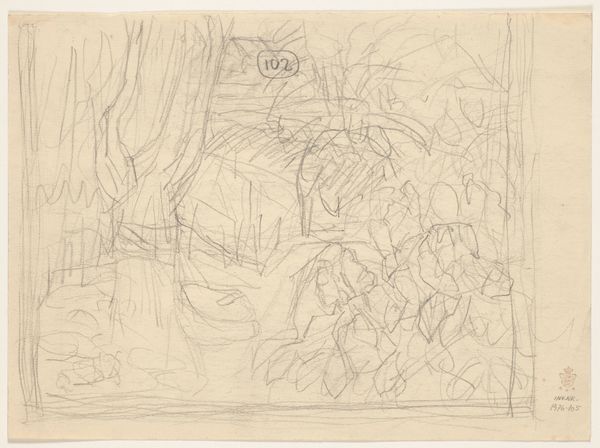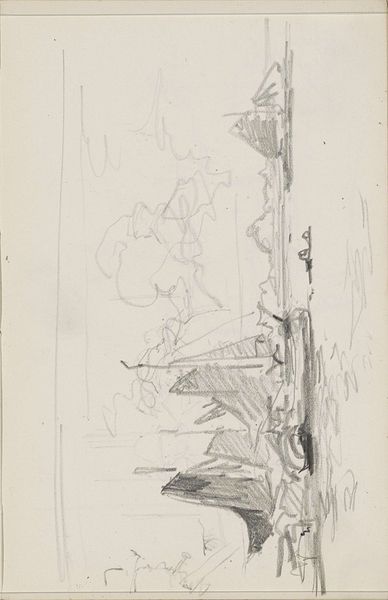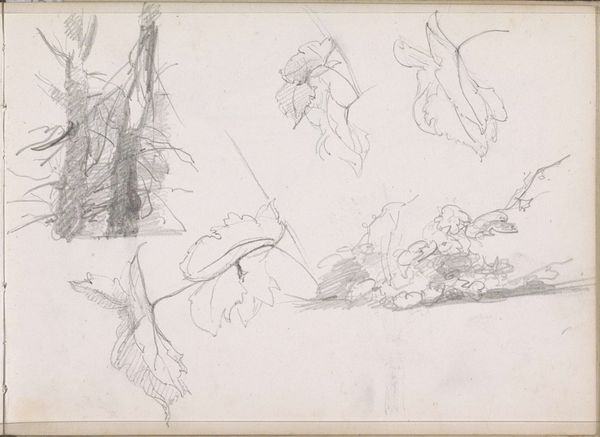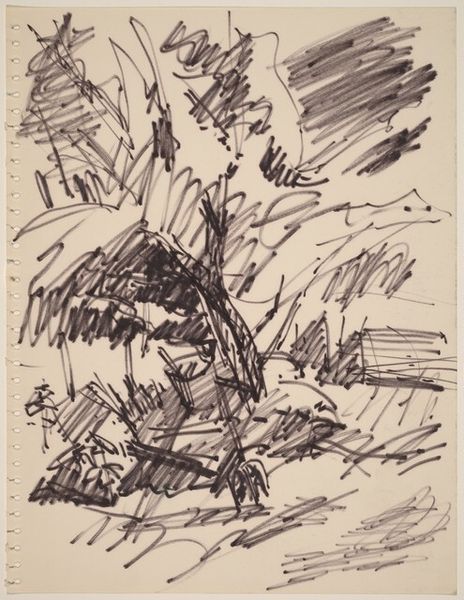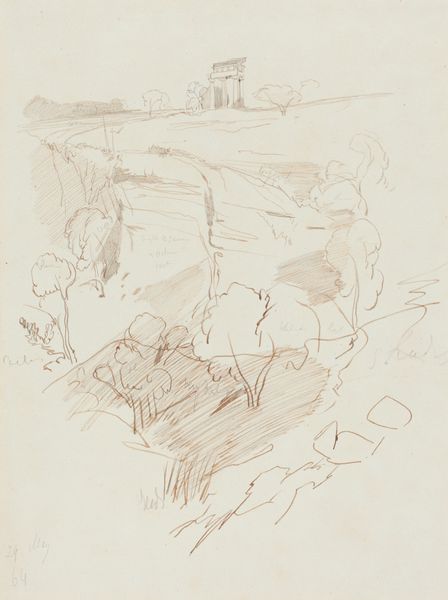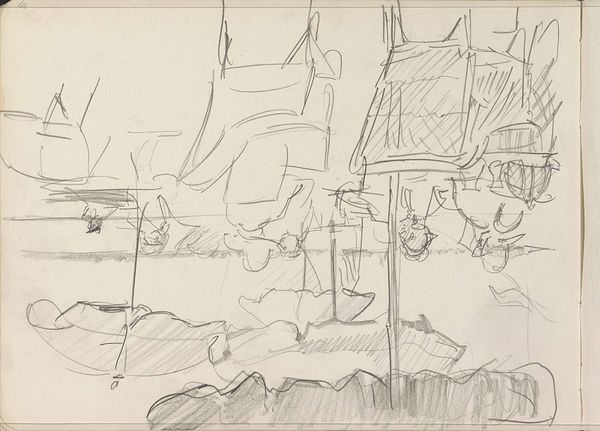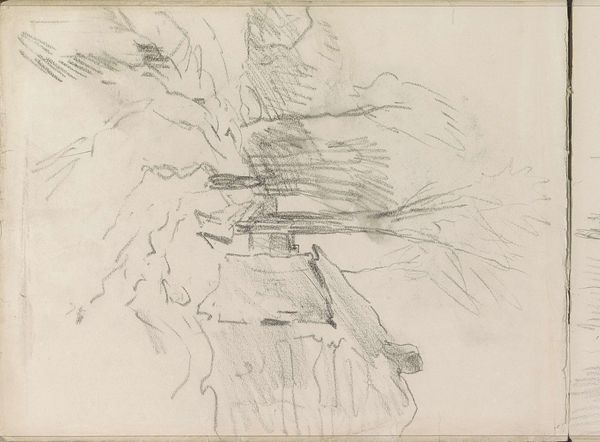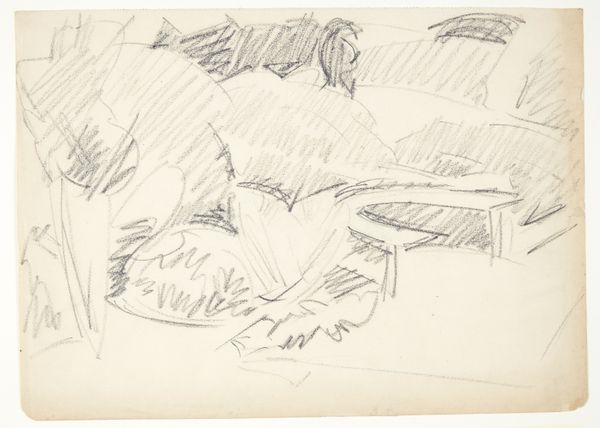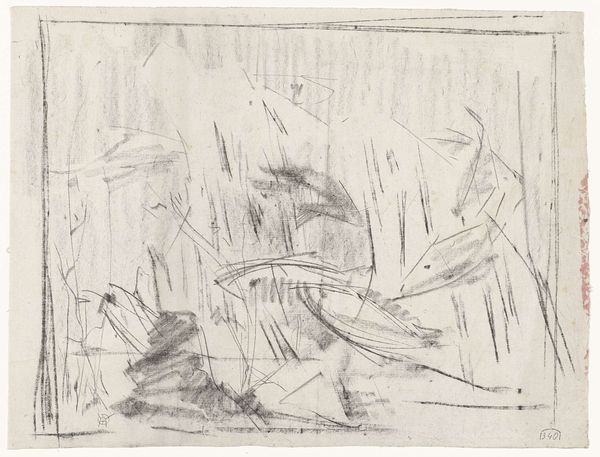
drawing, pencil
#
drawing
#
dutch-golden-age
#
pen sketch
#
landscape
#
pencil
#
genre-painting
#
realism
Dimensions: height 163 mm, width 209 mm
Copyright: Rijks Museum: Open Domain
Gerard ter Borch the Younger made this drawing of trees, cattle, and a hut with graphite on paper. It gives us a glimpse into the cultural values of the Dutch Golden Age, in which Ter Borch lived and worked. During this period, the Netherlands saw unprecedented economic growth and social mobility, and art played a crucial role in reflecting these shifts. Landscape art, like this drawing, became increasingly popular as a way of celebrating the Dutch countryside and its agricultural wealth. But Ter Borch's drawing also hints at the social realities of rural life, with its depiction of simple dwellings and grazing livestock. It is through the work of historians that these images can speak to us. By looking at estate records, literature and other artworks of the time, we get a richer understanding of the role of art in reflecting and shaping the values of its time.
Comments
No comments
Be the first to comment and join the conversation on the ultimate creative platform.
